This is the second post on the 18th-19th century Indian textile we’ve had the good fortune to work on of late. If you missed the first post in this series, you can find it here. In this post we’ll present history and possible use of the piece.
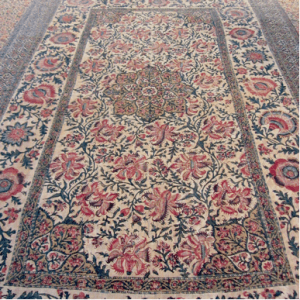 This kalamkari is a treasure of the venerable 18th-19th century Indian trade cloth boom days. This type of textile likely developed from the highly interconnected trade relationship between Persia and India, and was produced for export to the international market as early as the 10th century.
This kalamkari is a treasure of the venerable 18th-19th century Indian trade cloth boom days. This type of textile likely developed from the highly interconnected trade relationship between Persia and India, and was produced for export to the international market as early as the 10th century.
The complex patterns are drawn with pen and ink, as well as block printing. In John Irwin’s definitive text Indian Painted and Printed Fabrics, we find images of the tools and techniques that were used create kalamkari, including bamboo pens, twig brushes and block printing.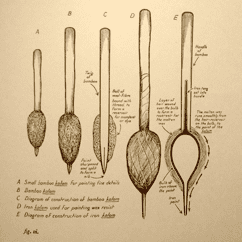 In our textile, it is difficult to decipher which areas are painted and which are block printed. The work is very fine, with minimal bleeding of the dyes and careful composition. The corners have been carefully finessed during printing to beautifully integrate the ornamentation and regulate the complex pattern repeats.
In our textile, it is difficult to decipher which areas are painted and which are block printed. The work is very fine, with minimal bleeding of the dyes and careful composition. The corners have been carefully finessed during printing to beautifully integrate the ornamentation and regulate the complex pattern repeats.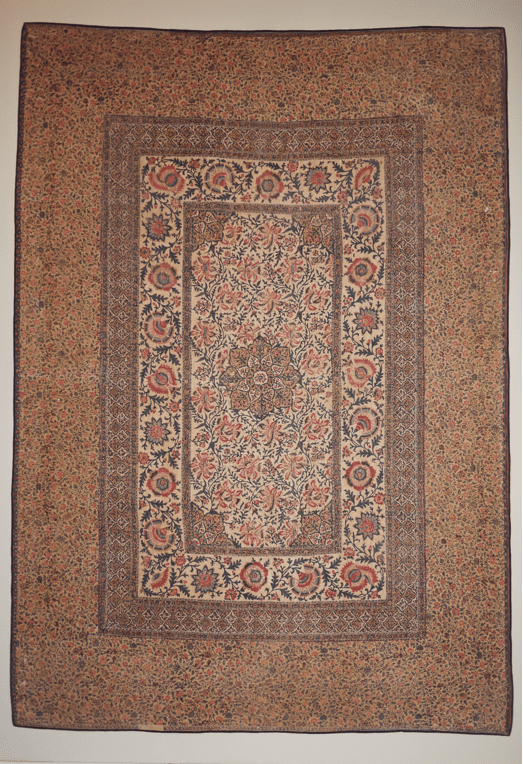
The front is one large panel of fine cotton, except for the outer border, which is pieced. An inscription drawn in three cartouches is part of the outer border, although the original owner, and everyone consulted so far, is utterly stumped by the script. There are, however, lots of theories – the name of drawer or block printer, the name of Indian workshop or the date and name of Persian broker for whom the piece was made… or as the owner suggested “do not dry clean.”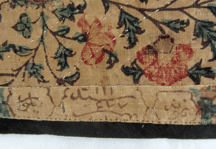
For more insight, we reached out to a colleague who owns a similar 19th century “prayer rug” with kalamkari work from the Machilipatnam region of India. He suggested “this style of Kalamkari were made in India for export to Persia, but there was also a cruder version being made domestically in Persia around Isfahan mimicking the Indian ones. Judging from the intricacy of the work, I would be inclined to think that this textile is the Indian made export rather than the Isfahan version.”
- Prayer rug
- Detail of prayer rug
- Our textile, for comparison
He went on to say that the symmetry of our piece indicated that it was probably a floor covering or a bed coverlet, and thought the inscription was in Arabic or Farsi. Irwin states that block printed and painted coverlets and floor-coverings, similar to this 19th century coverlet, were from “Masulipatam,” which was later called Machilipatnam.
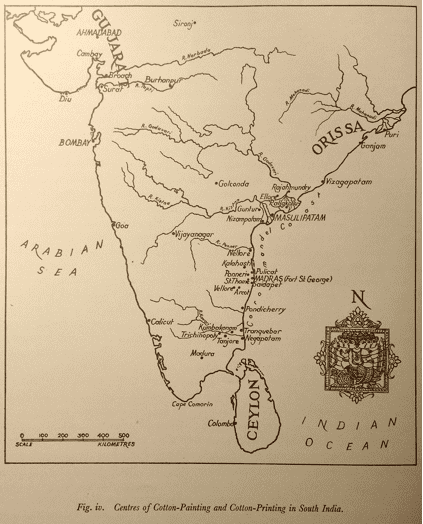 A map of block printing and trade cloth centers in India shows Masulipatam was a significant production area.
A map of block printing and trade cloth centers in India shows Masulipatam was a significant production area.
A web search for Masulipatam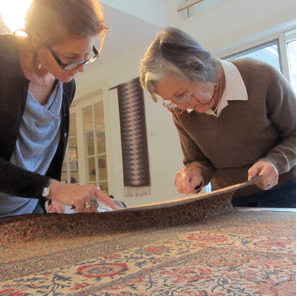 gave us another sister of our kalamkari, also with chintz on the reverse.
gave us another sister of our kalamkari, also with chintz on the reverse.
For another perspective, we welcomed a colleague to lend her impressions. A textile scholar, collector and traveler, she noted that the quilting work was often seen in Indo-Portuguese hangings and coverlets, since the Portuguese climate warranted a thicker cloth. Observing the careful arrangement of the printing around the corners of the textile, she also told us that the key person responsible for this, and the one who is most respected in this art is the “nagash” or “naqqash” – the designer.
She further suggested that the inscription could be Arabic, or Mudéjar – referring to Muslims who remained in Iberia after the Christian Reconquista but did not convert to Christianity.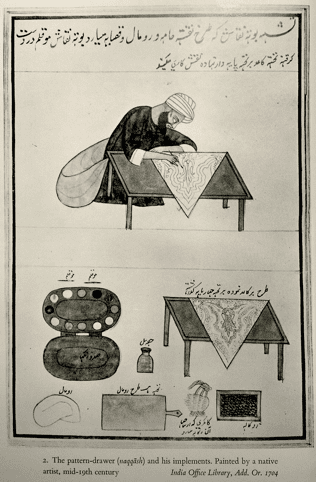 We asked several speakers of Arabic and Farsi to decipher the inscription. One Farsi speaker suggested it is a stamp from Isfahan, the 17th century Persian capital, and phonetically sounds like “Taze karam.”
We asked several speakers of Arabic and Farsi to decipher the inscription. One Farsi speaker suggested it is a stamp from Isfahan, the 17th century Persian capital, and phonetically sounds like “Taze karam.”
So now we are asking for your help! Do you know what this inscription says? Can you help us find the birth place of our beautiful Masulipatam kalamkari coverlet/floor covering?
By Varvara Degtiarenko
Textile conservation assistant and independent filmmaker
References:
INDIAN PIGMENT PAINTINGS ON CLOTH
Kay Talwar and Kalyan Krishna, 1979.
INDIAN PAINTED AND PRINTED FABRICS
John Irwin and Margaret Hall, 1971
TRADE GOODS: A STUDY OF INDIAN CHINTZ
Alice Baldwin Beer, 1970
PORTUGAL AND THE EAST THROUGH EMBROIDERY
International Exhibitions Foundation, Phyllis C. Kane, 1981

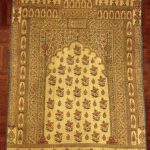
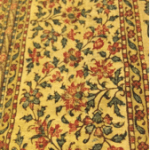
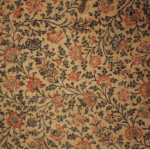
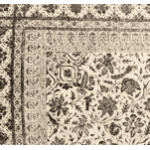
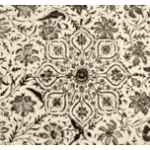
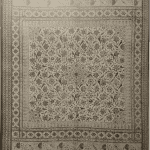

What a fascinating mystery to solve! I will forward your blog/story to share with Indian friends who may know others with inside info ;o)
namaste!
jane